'Albert Einstein' in space: Europe launches cargo...
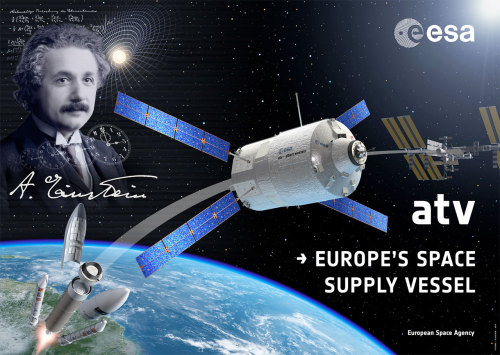

'Albert Einstein' in space: Europe launches cargo spacecraft named for scientist
The European Space Agency launched its penultimate mission to the International Space Station on Wednesday (June 5), expending great energy to lift a record amount of mass aboard a spacecraft named for the scientist famous for linking the two units with the equation "E=mc^2."
The European Space Agency's (ESA) Automated Transfer Vehicle-4 (ATV-4), an unmanned cargo freighter, lifted off on an Ariane 5 rocket from Europe's spaceport in Kourou, French Guiana at 5:52 p.m. EDT (2152 GMT). The second to last of ESA's five planned station resupply spacecraft launched since 2008, ATV-4 was named "Albert Einstein" after the iconic physicist known for the theory of relativity.
Einstein's theories have been put to the test in space and his work has guided robotic spacecraft to other planets. ATV-4 is the first spaceship to bear Einstein's name, at the suggestion of the Swiss delegation to the European Space Agency. Einstein was born in Germany but studied and spent his early career in Switzerland.Lifting off from the jungle spaceport along South America's northeast coast, ATV-4 soared spaceward with Europe's largest-ever load of dry cargo for the station. Packed with science experiments, crew supplies, a 3D printed tool box and even copies of Einstein's manuscript explaining the foundation for the general theory of relativity, the craft is destined to dock with the orbiting laboratory on June 15.
via collectSPACE.com
Chandra, Spitzer study suggests black holes abundant among the...

Chandra, Spitzer study suggests black holes abundant among the earliest stars
The cosmic microwave background, shown at left in this illustration, is a flash of light that occurred when the young universe cooled enough for electrons and protons to form the first atoms. It contains slight temperature fluctuations that correspond to regions of slightly different densities, representing the seeds of all cosmic structure we see around us today. The universe then went dark for hundreds of millions of years until the first stars shone and the first black holes began accreting gas. A portion of the infrared and X-ray signals from these sources is preserved in the cosmic infrared background, or CIB, and its X-ray equivalent, the CXB. At least 20 percent of the structure in these backgrounds changes in concert, indicating that black hole activity was hundreds of times more intense in the early universe than it is today.
By comparing infrared and X-ray background signals across the same stretch of sky, an international team of astronomers has discovered evidence of a significant number of black holes that accompanied the first stars in the universe.
Using data from NASA's Chandra X-ray Observatory and NASA's Spitzer Space Telescope, which observes in the infrared, researchers have concluded one of every five sources contributing to the infrared signal is a black hole.
Credit: Karen Teramura, UHIfA
Astronomers discover light echo from supernova: Astronomers...
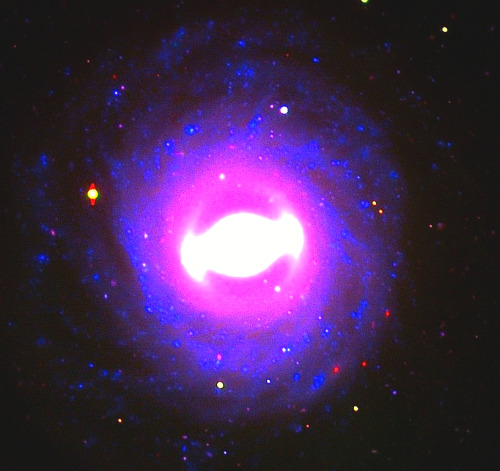
Astronomers discover light echo from supernova:
Astronomers have discovered light echoing off material surrounding a recent supernova explosion, SN 2009ig. The dust and gas that are reflecting the light are so close to the eruption center that it is likely related to the progenitor star. This discovery supports the theory that exploding white dwarfs become unstable from matter donated by large, non-degenerate stars.
The light echo seen from SN 2009ig is only the sixth discovered from a Type Ia supernova, and it is the most luminous of the echoes.
An echo on Earth results when a loud sound is heard directly and again after being reflected by a wall to the listener. Because of the longer path length taken by the redirected sound, it is heard slightly later than the original noise. A light echo works the same way. Direct rays from the flash of a supernova are received at the Earth while some rays are scattered by particles in the host galaxy and redirected to the Earth. As with sound echoes, the time delay and light-echo amplitude depends strongly on the distance between the source and the reflecting surfaces.
SN 2009ig was discovered less than a day after it exploded by the Lick Observatory Supernova Search. It was found in the galaxy NGC 1015 at a distance of 127 million light-years in the constellation Cetus, the sea monster. SN 2009ig was the brightest supernova of 2009 and was well studied by amateur and professional astronomers around maximum brightness.
via phys.org
This wide-field view of the sky around the bright star Alpha...

This wide-field view of the sky around the bright star Alpha Centauri was created from photographic images forming part of the Digitized Sky Survey 2. The star appears so big just because of the scattering of light by the telescope's optics as well as in the photographic emulsion. Alpha Centauri is the closest star system to the Solar System. Image released Oct. 17, 2012.
Credit: ESO/Digitized Sky Survey 2
Space Music: Symphonies of the Planets Possibly one of NASA's...
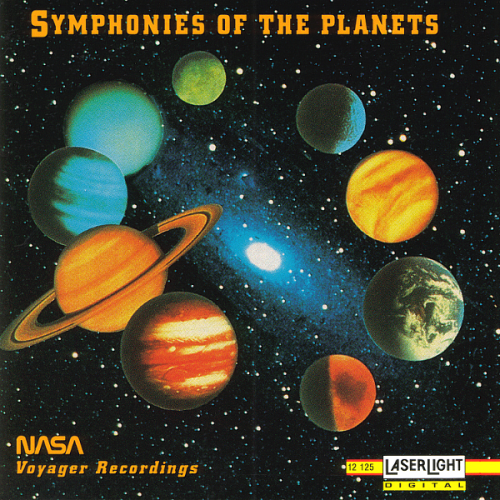
Space Music: Symphonies of the Planets
Possibly one of NASA's most avant-garde projects ever, SYMPHONIES OF THE PLANETS is a five-CD set that is now out of print. Put simply, it consists of recordings made by Voyager 1 and Voyager 2 as they passed by the various planets and moons of our solar system. Although sound as we perceive it cannot travel in the vacuum of space, each planet and moon emits its own electromagnetic "signature" that can be picked up by the right instruments, and those emanations can be converted into sound and recorded onto compact discs for your listening enjoyment.
Pioneer Science: Discovering Deep Space Around the world, a new...
Around the world, a new generation of astronomers are hunting for the most mysterious objects in the universe. Young stars, black holes, even other forms of life. They have created a dazzling new set of super-telescopes that promise to rewrite the story of the heavens.
This film follows the men and women who are pushing the limits of science and engineering in some of the most extreme environments on earth. But most strikingly of all, no-one really knows what they will find out there.
The planetary nebula Fleming 1 seen with ESO's Very Large...
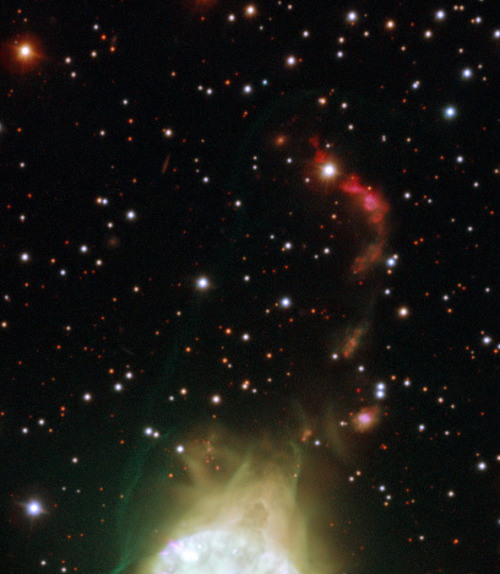
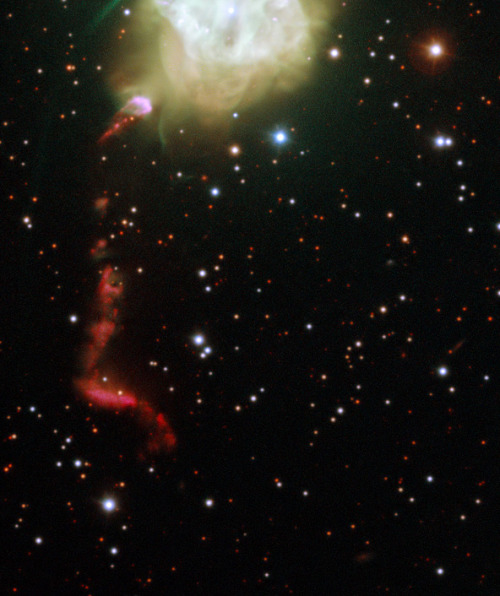
The planetary nebula Fleming 1 seen with ESO's Very Large Telescope
This ESO Very Large Telescope image shows the planetary nebula Fleming 1 in the constellation of Centaurus (The Centaur). This striking object is a glowing cloud of gas around a dying star. New observations have shown that it is likely that a very rare pair of white dwarf stars lies at the heart of this object. Their orbital motions can fully explain the remarkably symmetric structures of the jets in the surrounding gas clouds in this and similar objects.
Credit: ESO/H. Boffin
Low sodium diet needed for dying stars to create planetary...
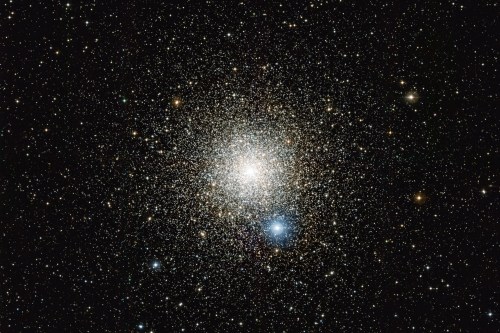
Low sodium diet needed for dying stars to create planetary nebula
New observations of a huge star cluster, made using the European Southern Observatory's Very Large Telescope (VLT), have shown that the way in which stars evolve and end their lives depends on the amount of sodium they contain.
Detailed computer models predict that stars of a similar mass to the Sun would have a period towards the ends of their lives, called the asymptotic giant branch (AGB), when they undergo a final burst of nuclear burning and puff off a lot of their mass in the form of gas and dust.
For a short period of time this ejected material is lit up by the strong ultraviolet radiation from the star and creates a planetary nebula, before forming the next generations of stars. This cycle of rebirth is vital to explain the evolving chemistry of the Universe and also provides the material required for the formation of planets, and even the ingredients for organic life.
Now, Australian stellar theory expert Simon Campbell of the Monash University Centre for Astrophysics, Melbourne, has found tantalising suggestions that some stars may not follow the rules and might skip the AGB phase entirely.
Image: The globular star cluster NGC 6752 in the southern constellation of Pavo (The Peacock)
A fan, Andy Greenlaw, made this music video from Neil deGrasse...
Saturn's Ultraviolet Auroras This is the first image of...
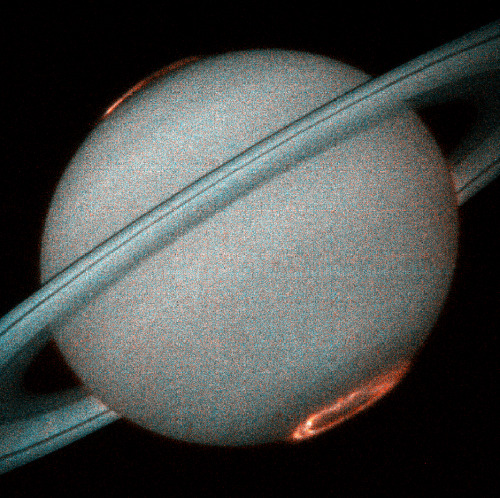
Saturn's Ultraviolet Auroras
This is the first image of Saturn's ultraviolet aurora taken by the Space Telescope Imaging Spectrograph (STIS) on board the Hubble Space Telescope in October 1997, when Saturn was a distance of 810 million miles (1.3 billion kilometers) from Earth. The new instrument, used as a camera, provides more than ten times the sensitivity of previous Hubble instruments in the ultraviolet. STIS images reveal exquisite detail never before seen in the spectacular auroral curtains of light that encircle Saturns north and south poles and rise more than a thousand miles above the cloud tops.
Credit: J.T. Trauger (Jet Propulsion Laboratory) and NASA/ESA
Bits and Pieces of the Carina Nebula This is a series of...
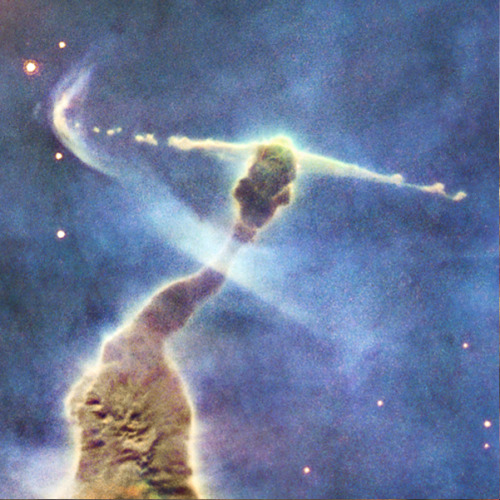
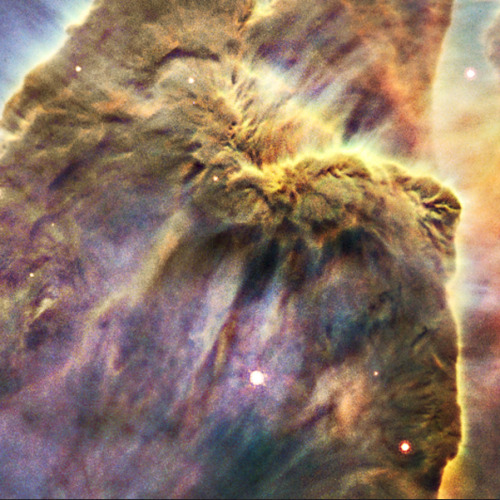
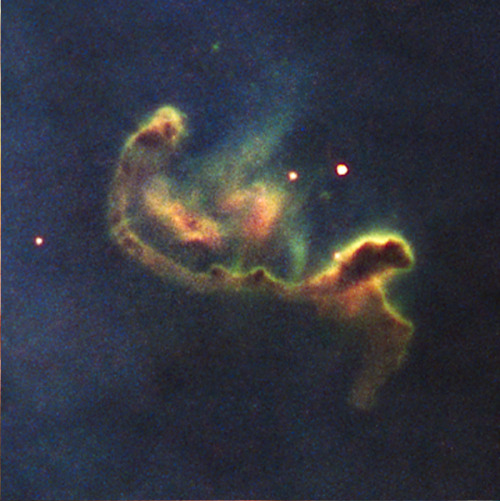
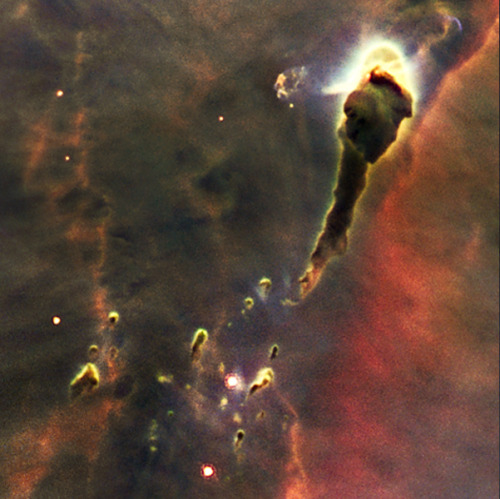
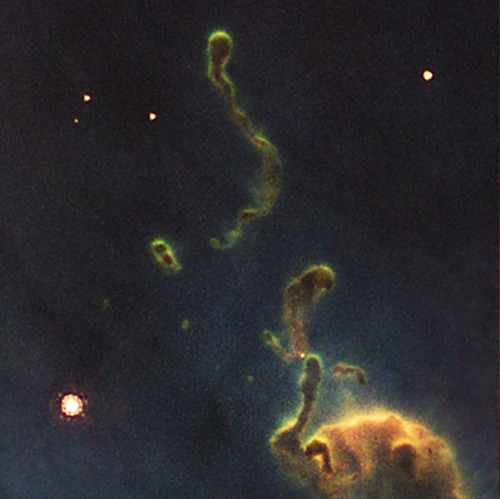
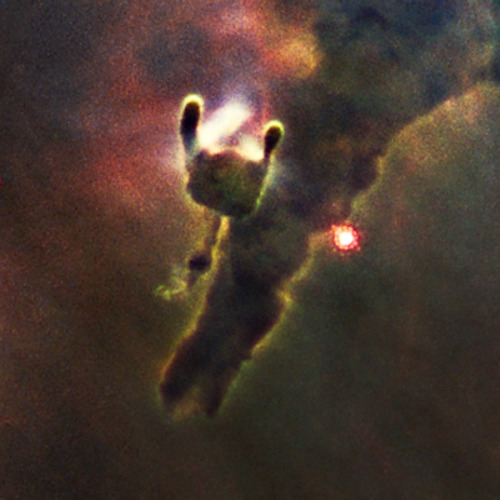
Bits and Pieces of the Carina Nebula
This is a series of close-up views of the complex gas structures in a small portion of the Carina Nebula. The nebula is a cold cloud of predominantly hydrogen gas. It is laced with dust, which makes the cloud opaque. The cloud is being eroded by a gusher of ultraviolet light from young stars in the region. They sculpt a variety of fantasy shapes, many forming tadpole-like structures. In some frames, smaller pieces of nebulosity can be seen freely drifting, such as the 2.3-trillion-mile-long structure at upper right. The most striking feature is a 3.5-trillion-mile-long horizontal jet in the upper left frame. It is being blasted into space by a young star hidden in the tip of the pillar-like structure. A bowshock has formed near the tip of the jet.
Credit: NASA, ESA, and M. Livio
NGC 3324 is a star cluster at the northwest corner of the Carina...
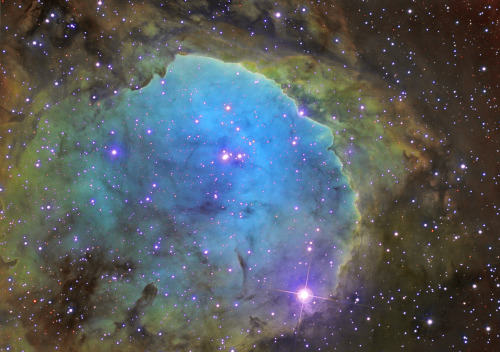
NGC 3324 is a star cluster at the northwest corner of the Carina Nebula (NGC 3372), home of the Keyhole Nebula and star Eta Carinae.
Credit: Copyright 2006 Brad Moore and Southern Astro
Here's a photo of Europe's Edoardo Amaldi Automated Transfer...

Here's a photo of Europe's Edoardo Amaldi Automated Transfer Vehicle, about to dock with Space Station. And here's a quick video of the approach, with thrusters firing.
Credit: Don Pettit
Titan, Saturn's Largest Moon Titan is Saturn's...
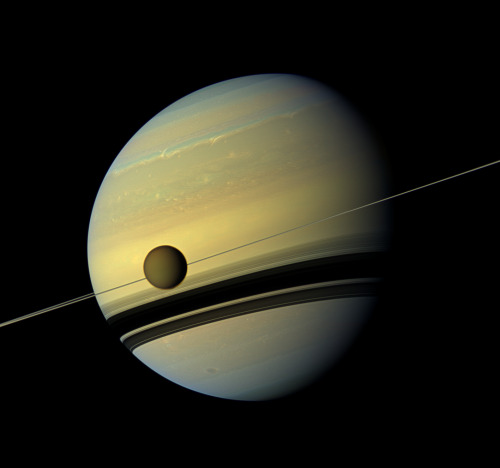
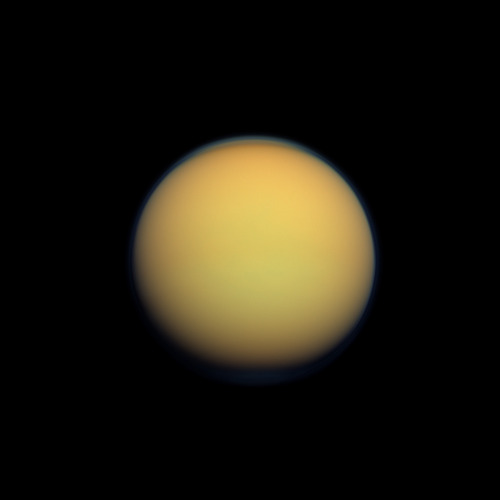
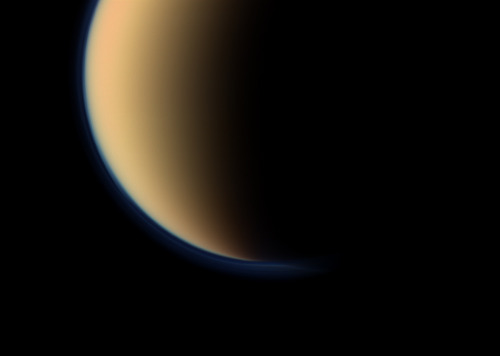
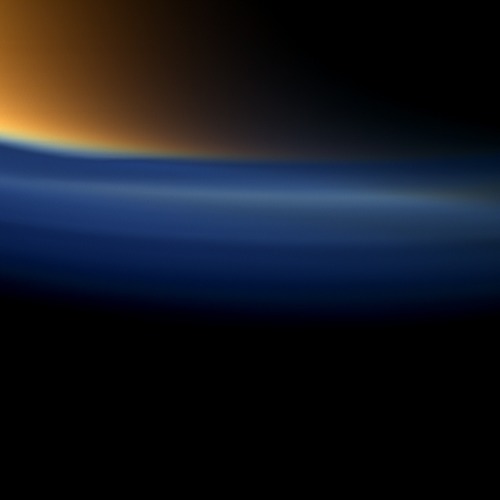
Titan, Saturn's Largest Moon
Titan is Saturn's largest moon and the second largest in the solar system (after Ganymede of Jupiter). The origins of the name Titan come from ancient Greek. According to sources like NASA, Titan has a lot of conditions that make it similar to Earth.
Titan is the only moon in the solar system with clouds and a dense, planet-like atmosphere. It is surrounded by an orange haze that kept its surface a mystery for Earth´s scientists until the arrival of the Cassini mission.
Titan's atmosphere is active and complex, and it is mainly composed of nitrogen (95 percent) and methane (5 percent). Titan also has a presence of organic molecules that contain carbon and hydrogen, and that often include oxygen and other elements similar to what is found in Earth's atmosphere and that are essential for life. Scientists believe that these conditions are similar to Earth's early years (the main difference is that, because it is closer to the sun, Earth has always been warmer).
Credit: NASA/JPL-Caltech/Space Science Institute/SPACE.com
Color Variation Across Rhea and Dione The cratered ice moons...
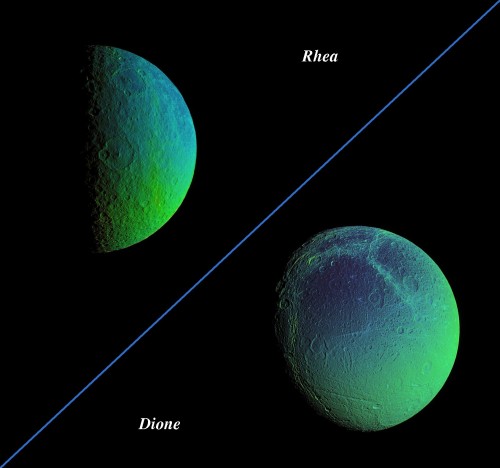
Color Variation Across Rhea and Dione
The cratered ice moons Rhea and Dione come alive with vibrant color that reveals new information about their surface properties.
To create these false-color views, ultraviolet, green and infrared images were combined into a single black and white picture that isolates and maps regional color differences. This "color map" was then superposed over a clear-filter image of each moon.
The combination of color map and brightness image shows how the colors vary across the moon's surface in relation to geologic features. The origin of the color differences is not yet understood, but may be caused by subtle differences in the surface composition or the sizes of grains making up the icy soil.
The images have not been scaled to show the moons' proper relative sizes.
Credit: NASA/JPL/Space Science Institute
The Milky Way from the horizon to the zenith Full View Credit:...
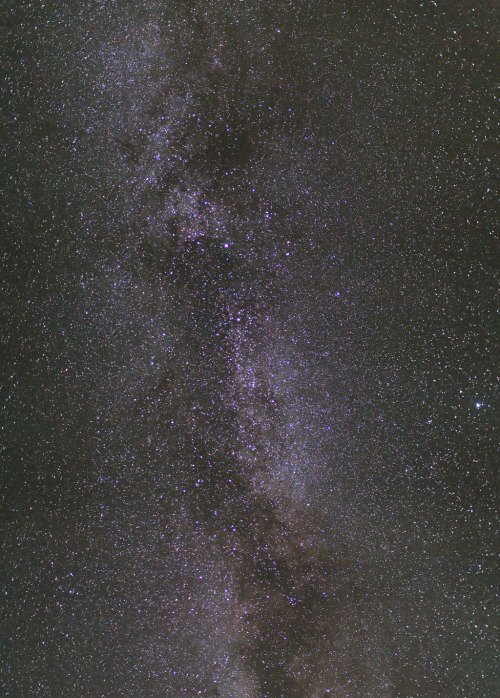
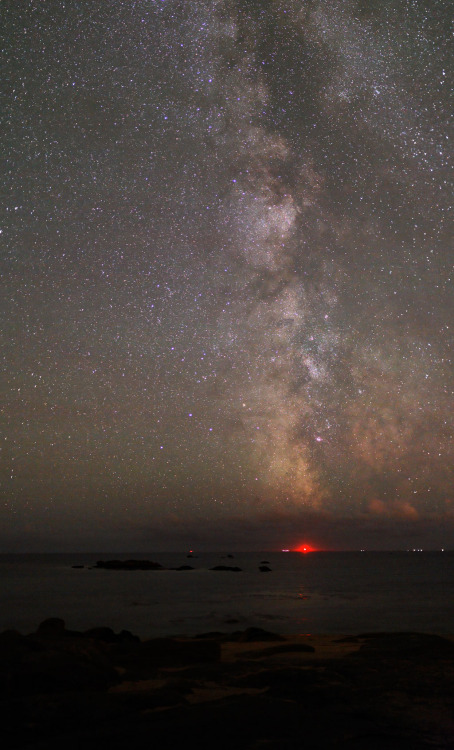
The Milky Way from the horizon to the zenith
Credit: Laurent Laveder
Italians put 'disco ball' into orbit Italian...
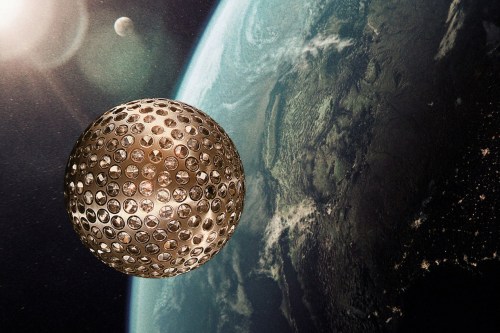
Italians put 'disco ball' into orbit
Italian physicists have put a test particle into space to attempt to measure an effect predicted by general relativity.
The object, which is about the size of a football, made of tungsten and covered with 92 reflectors, is supposedly the "most perfect" test particle ever put into space. It's entirely passive, weighs 400kg, and will be tracked by lasers from Earth.
It was launched on 13 February, 2012, and is known as Lares, or the "Laser Relativity Satellite". Its objective is to provide data that will allow physicists to measure a phenomenon known as rotational frame-dragging.
This is a tiny, subtle effect predicted by general relativity where massive spinning bodies, like planets, drag space-time with them as they turn, changing the angle at which small particles close by rotate.
Nasa's Gravity Probe B, launched in 2004, contained four small, spherical gyroscopes to try and measure this effect, but problems with the spacecraft reduced their accuracy to only about 20 percent. The Italians believe their approach is a much cheaper way of achieving the same goal.
It's hoped that by tracing the angle of Lares' rotation, along with a pair of other less-perfect balls already in orbit - Lageos 1 & 2 - the frame-dragging effect will finally be able to be observed.
Apollo 15 launch Apollo 15 launched on July 26, 1971, at 9:34 AM...

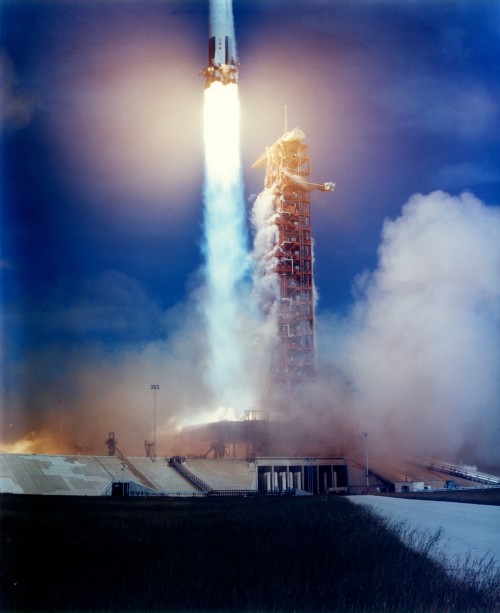
Apollo 15 launch
Apollo 15 launched on July 26, 1971, at 9:34 AM EDT from the Kennedy Space Center, at Cape Canaveral, Florida. During the launch, the S-IC did not completely shut off following staging for four seconds, creating the possibility of the spent stage banging into the S-II engines, damaging them and forcing an abort (the S-II exhaust also struck a telemetry package on the S-IC and caused it to fail). Despite this, the third stage and spacecraft reached its planned Earth parking orbit. A couple of hours into the mission, the third stage reignited to propel the spacecraft out of Earth orbit and on to the Moon.
"Now, for the first time in its billions of years of...
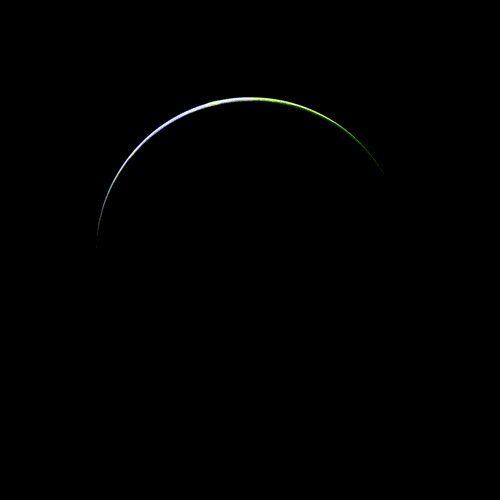
"Now, for the first time in its billions of years of history, our planet is protected by far-seeing sentinels, able to anticipate danger from the distant future–a comet on a collision course, or global warming–and devise schemes for doing something about it. The planet has finally grown its own nervous system: us."
- Daniel Dennett (We Earth Neurons)
South Pole Telescope The South Pole Telescope (SPT) is a 10...
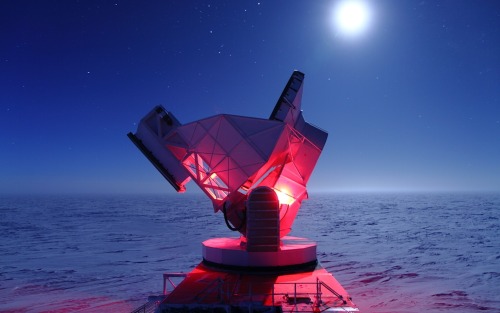
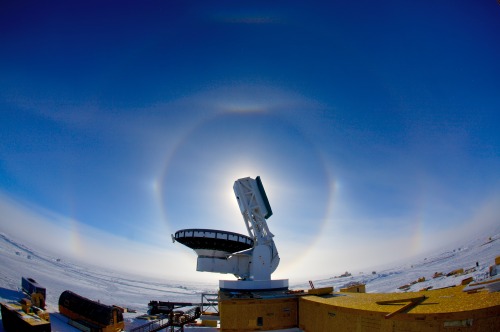
South Pole Telescope
The South Pole Telescope (SPT) is a 10 metre (394 in) diameter telescope located at the Amundsen-Scott South Pole Station, Antarctica. The telescope is designed for observations in the microwave, millimeter-wave, and submillimeter-wave regions of the electromagnetic spectrum, with the particular design goal of measuring the faint, diffuse emission from the Cosmic Microwave Background (CMB). The first major survey with the SPT–designed to find distant, massive, clusters of galaxies through their interaction with the CMB, with the goal of constraining the Dark Energy equation of state–was completed in October, 2011. In early 2012, a new camera was installed on the SPT with even greater sensitivity and the capability to measure the polarization of incoming light. This camera is designed to measure the so-called "B-mode" or "curl" component of the polarized CMB, leading to constraints on the mass of the neutrino and the energy scale of inflation.
The South Pole is the premier observing site in the world for millimeter-wavelength observations. The Pole's high altitude (2.8 km/1.7 mi above sea level) means the atmosphere is thin, and the extreme cold keeps the amount of water vapor in the air low. This is particularly important for observing at millimeter wavelengths, where incoming signals can be absorbed by water vapor, and where water vapor emits radiation that can be confused with astronomical signals. Because the sun does not rise and set daily, the atmosphere at the pole is particularly stable. Further, there is no interference from the sun in the millimeter range during the months of polar night. Of course, from this location, only the southern celestial sky can be observed; the northern sky is permanently inaccessible.














ليست هناك تعليقات:
إرسال تعليق